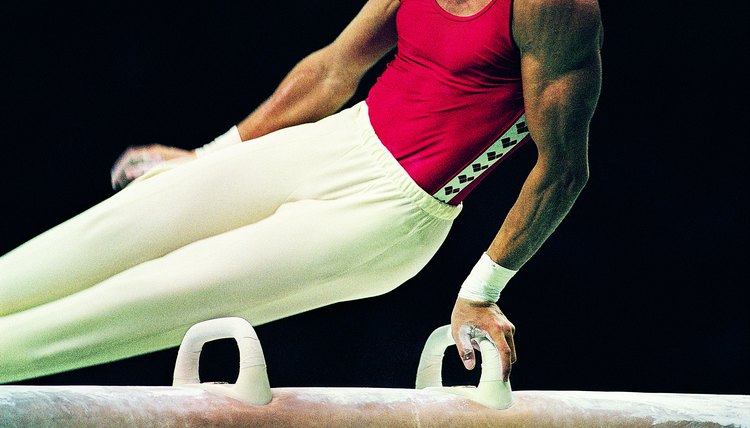What does fact checked mean?
At SportsRec, we strive to deliver objective content that is accurate and up-to-date. Our team periodically reviews articles in order to ensure content quality. The sources cited below consist of evidence from peer-reviewed journals, prominent medical organizations, academic associations, and government data.
The information contained on this site is for informational purposes only, and should not be used as a substitute for the advice of a professional health care provider. Please check with the appropriate physician regarding health questions and concerns. Although we strive to deliver accurate and up-to-date information, no guarantee to that effect is made.
Training Program for a Gymnast

Gymnastics is an intensive activity that requires strength, flexibility, agility and balance. To successfully prepare for competitive or recreational gymnastics, create a training program that develops the necessary physical attributes in a way that complements the activity. For example, it isn’t enough to just build strength, but you must do so in a way that doesn’t excessively increase your level of muscle mass. One of the most important aspects of your training will be to maximize your strength while minimizing your size.
Mark Your Calendar
The framework of a gymnast training program is the schedule established for working out. Strength-training coach Rob Price recommends using a three-day strength-training regimen that focuses on sport-specific muscle groups through compound exercises. Each of the three training days will utilize a specific training intensity, with one heavy weight/low-intensity session, one medium weight/intensity session and one light weight/high intensity session. Separate your strength-training workouts with at least one day in between. Use those days to perform flexibility and endurance exercises, and give yourself one complete day of rest from exercise each week.
Reps and Sets
Strength training is essential to your success as a gymnast. You need to possess functional strength that allows you to control your body’s weight and inertia through various routines. The strength-building portion needs to focus on carefully increasing strength while minimizing the amount of muscle mass you create. You will perform multiple compound lifts using a set and repetition structure that goes both over and under the hypertrophic threshold of six to 12 reps per set. Your heavy lift days (once per week) will involve three to five sets of five reps, and your light lifting days will center around exercises performed through 13 to 15 reps per set.
Core Lifts
Your weight-training exercises will work every major muscle group in your body. Compound exercises engage both the primary target muscle groups, as well as the network of smaller secondary muscles you will need to stabilize yourself and maintain balance during your routine. Your core lifts will include flat and incline bench presses, military shoulder presses, deadlifts, squats, dumbbell toe raises, bent-over rows and leg presses.
Remain Flexible
The other three training sessions each week will focus on improving flexibility and developing the explosiveness you need for a gymnastics routine. Many of the flexibility exercises will utilize your body weight, just like your routine will, acclimating your body to the short, intense bursts of anaerobic activity that is central to gymnastics. As you progress, you can increase the difficulty of some exercises by using a weighted medicine ball (use very light weight to prevent overtraining). Begin with box jumps, walking lunges, front and side planks, Russian twists, front and side hyper-extensions and dot drills.
References
- Gymnastics: How to Create Champions; Leonid Arkaev, N. G. Suchilin
- The Ultimate Guide to Weight Training for Gymnastics; Rob Price
- American Council on Exercise: Gymnastics Inspired Workout
- Strength Training Fundamentals in Gymnastics Conditioning; James J. Major
- USA Gymnastics: 2013 Administrator's Handbook Fitness Program
Writer Bio
Bobby R. Goldsmith is a writer and editor with over 12 years of experience in journalism, marketing and academics. His work has been published by the Santa Fe Writers Project, "DASH Literary Journal," the "Inland Valley Daily Bulletin" and WiseGEEK.
